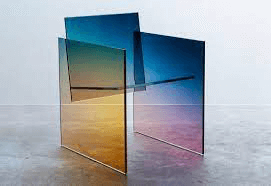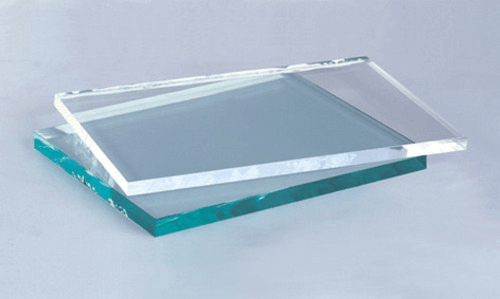Advantages and Disadvantages of GlassGlassA transparent, non-crystalline, and amorphous solid that has widespread application in decorative, practical, and technological use in, for example, optics, window panes, and tableware. It develops due to the rapid cooling of the molten form, and some glasses form naturally, such as volcanic Glass. 
The most familiar type of Glass and historically produced Glass is "silicate glasses," based on silica compound, and the primary constituent is sand. Soda lime glasses contain 70% of silica, accounting for 90% of the Glass. Despite the glasses being brittle, they will survive very long, and some glass fragments will exist from early glass-making cultures. Evidence suggests that glass-making culture goes back to 3600 BC in Egypt, Syria, and Mesopotamia. Glasses were earlier known as beads and developed accidentally during metalworking or in the manufacturing of faience. Since glasses can be easily moulded into desirable shapes, they have been widely used in making drinking glasses, bowls, vases, jars, and bottles. In solid form, it is used in marbles and paperweights. Manufacturing of GlassThe production of Glass is expensive and consumes a lot of time. It requires intensive labour in the beginning, but with the emergence of a unique glass manufacturing method, the production of Glass has become effective, affordable, and simple. The process has assumed wide popularity: Some of the few straightforward steps that are involved in the manufacturing of Glass are:
The materials that are melted for the formation of Glass are: Calcium Carbonate, Potash (KOH), Pure sand (SiO2) (KOH) at a temperature of more than 1000 degrees Celsius. In simple words, we can observe that it is an amalgamation of sodium, potassium, and calcium silicates. Annealing TechniqueThis involves heating the material temperature above its recrystallization temperature, keeping it for an adequate time, and letting it cool down. Glass Building Properties
Compressive Strength of the Glass Material It has compressive strength off 1000N/mm square= 1000MPa. It possesses low tensile strength than compressive strength. Tensile StrengthIt always possesses high compressive stress resistance and low tensile resistance.
Young's Modulus or Modulus of ElasticityThe material's stiffness can be determined with the help of Young's Modulus of elasticity. A higher value of Young's Modulus exhibits material rigidity. Young's Modulus of the Glass at 200 degrees Celsius is 70GPa and for the concrete is 30-50GPa. Glass Poisson RatioIt is also termed as Lateral contraction co-efficient. It says that material expansion and contraction in one direction due to force. Glass loses its cross-sectional area when it is stretched. The Poisson ratio of the Glass is 0.22. Coefficient of Thermal Expansion or Glass Linear ExpansionGlass's linear expansion coefficient is 9 x 10-6m/MK. Types of Glass Used in the Construction Industry1. Shatterproof Glass This type of Glass is used for windows, skylights, floors, etc. In its manufacturing, polyvinyl butyral is added. Due to this, the glasses cannot be shattered into pieces. 2. Extra Clear Glass The main qualities of the extra clean or clear Glass are hydrophilic and Photocatalytic. It makes the Glass more stain-resistant. It provides a very pleasant appearance and requires simple maintenance. 3. Float Glass It is also referred to as soda lime glass. It is composed of sodium silicates and calcium. It generates glare as it is clear and flat. Float glass weight ranges from 6-36 kg/m square. Thickness is between 2-20mm. It has widespread uses, such as public spaces and storefronts. 4. Laminated Glass The regular layers of Glass are merged to get laminated Glass. It is bulkier than regular Glass. These glasses are UV resistant, robust, and soundproof. These types of glasses are easily observed in bridges and aquariums. 5. Chromatic Glasses Chromatic glasses are used in conference rooms, ICUs, and other space that consumes chromatic Glass. The Glass has the property of regulating the sunlight and can protect the interior design from the sunlight. It is thermos chromatic and sensitive. Besides this, it is also electrochromic and heat-sensitive because of lamination. 6. Toughened Glass It is a tough material and has poor visibility. When it shatters, it forms little granular bits. It is used in screen protectors and fire-resistant doors. Sometimes it is also called tempered Glass. 7. Insulated Glass This Glass is divided into 2-3 layers. One layer is enclosed in insulated glazed glass units by vacuum or air. Since air is present between the layers, they behave as effective insulators. It is also sometimes known as "double-glazed units." Advantages of Glass
Disadvantages of The Glass
|
 For Videos Join Our Youtube Channel: Join Now
For Videos Join Our Youtube Channel: Join Now
Feedback
- Send your Feedback to [email protected]
Help Others, Please Share










